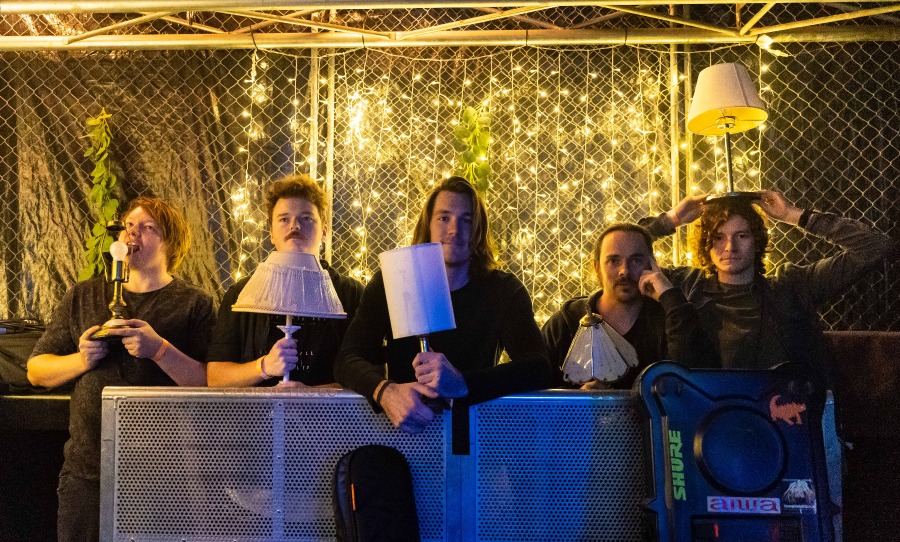On the verge of releasing Fragments, his new LP, we caught up with Bonobo to chat about its contemplative, yet chaotic nature.
The career of Bonobo is a macrocosm of one of his tracks. Steadily building towards dramatic peaks, with ample space for reflection built-in, and always keeping fans transfixed with quiet fascination.
His naughties period reflects hours of crate-digging to unearth tastefully dusty breaks, inspired by what must have been a healthy diet of downtempo beats. In the next decade, he hit his stride with a more hi-fi flavour of electronica, vocal collabs made in heaven, and intricate arrangements of instruments plucked from all corners of the globe.
Fragments, his forthcoming album, represents a sublimation of those latter-career skills. Widescreen sound design that’s just as at home in the club as it is in your headphones, effortlessly evolving transitions of mood, and replete with perfectly curated vocal contributions.
We took five with Bonobo to chat about how the album came together, the contrasting singles that are already out, and the injection of controlled chaos into the mix.

HAPPY: On a big picture level, Fragments seems to be an album of ‘environments’. Every track is a dance between the natural and synthetic worlds, the digital and analog, the intimate and spacious. Was this binary approach to the soundworld a conscious effort for this record?
BONOBO: I suppose both. Everything is just a reflection of what’s happening around you, right? And I feel that music is the same — I always make music about whatever’s going on in my head. I feel like a lot of it was based on tension and release. There are eruptive moments, but also gentle moments that reflect the acceptance of whatever was going on last year. I think it’s fluctuating between those two states.
HAPPY: If I had to pick a track that epitomised that approach it would be Elysian. The synth arpeggiator and harp bleed into each other, distorted leads and string melodies are interwoven. Are you conceiving it in an acoustic world in your mind? Or is it ‘on the grid’ electronica, with the orchestral elements happening afterwards?
BONOBO: That one I had as a sketch of something else first and I just followed the idea of the violin line. It was just a harmonic texture, but it’s never a conscious thing. I think even orchestral stuff is on the grid to a degree, it’s just a matter of how ‘fixed’ it is. Getting into those modular textures along with the acoustic, orchestral elements, I feel that’s always been a good pairing. Classic Moog-sounding stuff, there was a lot of that.

HAPPY: Were there any tools that you were relying on as you pursued this sound?
BONOBO: I really got into modular a lot; that was the main thing. Particularly the idea of generative music and a controlled amount of chaos. Setting up the machines to spew out a lot of interesting sound that’s within the parameters that you’ve given it. Traditionally, I use a lot of samples, but using the modular as a source for samples, I could generate that and use that as a starting point. That was a pretty refreshing approach. That was the main production difference on this record.
HAPPY: Turning to the single, Rosewood, it seems to be made for the club, but it’s still spacious enough to allow your ears to wander through the mix. Is there a temptation to keep adding layers to make it hit harder and harder?
BONOBO: Yeah, but ultimately adding layers doesn’t make things hit harder. After a while, it starts taking away. The exercise of testing stuff out in a club — which is something I didn’t have a chance to do this time — it’s always ‘less is more’. Just two elements working together gives you so much more than the sum of 50 things all happening at once because you lose the dynamics. So the idea was an exercise in minimalism.
I guess the references would be Theo Parrish and Carl Craig and the early 2000s era of broken beat, that’s what I was aiming for. I think of my favourite tunes that really hit in the club, it’s always just very minimal arrangement. It’s more about the switch and dynamic changes in what’s already there, rather than how much of it is there.
HAPPY: You touched on samples a bit earlier: was Rosewood guided by the vocal sample? Or did you massage that in afterwards?
BONOBO: The vocal was the last part actually. I had the tune pretty much complete and I knew that it just needed one more element to get it over the line. I tried a few things — including spoken word pieces and a monologue of Alice Coltrane talking about spirituality in an interview — but the vocal hook that’s in there now just jumped out as soon as I threw it against the track.
HAPPY: Tides features a stunning vocal performance by Jamila Woods. How did that collaboration come about? Are you receiving vocal tracks remotely or working together in the studio?
BONOBO: This time around, all the collaborations were remote. I didn’t really get in the room with anyone, so it made the process a little detached. But it was still great! I was speaking to her a long time ago about doing something and she was really into the idea and nothing happened for a while — at the start of the pandemic, nobody was really feeling it.
Then, as things started opening up again and people were feeling a little more lively and inspired, she texted me one day and said “I’ve done this vocal for you,” and sent it there and then. It was a big catalyst to get the rest of the record back on track. She totally smashed it. The vocal that she texted me was the one that ended up on the track. It wasn’t even a demo.
HAPPY: And if you are working remotely with a collaborator, is the production process back and forth? Are you giving them notes and encouraging them to go in a different direction?
BONOBO: A lot of the time, yeah. In the Jordan Rakei tune [Shadows], I sent him the beat, which was this long, meandering thing and said, “just interpret this however you like.” He sent back three different ideas and we just honed in on one of them. And I was like, “ok, this is how I see this shaping up: not a rambling nine-minute beat, but more of a song,” and I sent that back to him and he wrote around that structure.
With Kadhja Bonet [album closer, Day by Day], I sent her quite a loose beat and she sent me back a few ideas and I sort of patched a few of them together, rearranging her ideas into a song. We actually managed to get together in my studio and finish that one.
HAPPY: The presence of Miguel Atwood-Ferguson’s string arrangements can be felt pretty heavily too. Does that kind of collaboration work similarly to how you work with vocalists?
BONOBO: Miguel actually plays all the string instruments himself and layers them up. He’s also in L.A. and a super sweet dude. We went for a bunch of hikes and talked about it. He’s got a lot of stuff going on, so he just did those arrangements when he had time to get around to it. Normally, we would’ve been in the same room, but there’s also a lot to be said for giving people their own space to stretch out and try stuff without the pressure of the clock being on in the studio.
HAPPY: You played at Sydney’s Laneway Festival a few years back, which was expansive and very live, with a big ensemble. Do you have something similar planned for your dates next year?
BONOBO: Yes! I’m closing in on it now and just figuring out exactly what that’s going to look like. It will be a full band, but I need to deconstruct the record and see how all that fits together. The visuals will also be a big part of it.
HAPPY: Well, if the show makes it to Australia, we’ll all be glad to partake.
BONOBO: It definitely will. There are plans afoot already!
Fragments is out on January 14 via Ninja Tune.



